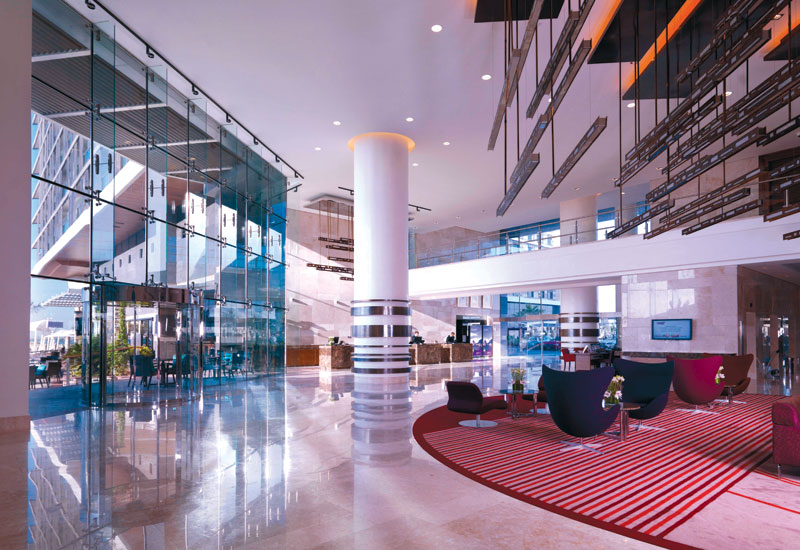SUSTAINABLE DESIGN: DOES IT MATTER?
The interior designers Hotelier Middle East spoke with held differing views on the subject of sustainable design, which were possibly influenced by the locations around the world in which they work.
A very honest Isabelle Miaja admits: “I don’t think that we are yet in a time period where sustainability and environmental issues are leading future design trends. I can hear everyone being upset about this comment and lecturing me that there are actually quite a few exceptions”.
It is true that for many hotel operators, sustainability is a relatively new concept yet to dramatically impact hotel creation.
As Ellen Bishop, managing partner at Bishop Design Associates, says: “At this moment in time there is unfortunately not enough focus on environmental design — it’s ‘all talk and no action’.
“The LEED compliant product selections are also still quite limited,” she adds.
However, this does not mean that hotel designers are not serious about sustainability and nor does it mean that owners and operators haven’t proved that it can work — as Miaja said, there are exceptions.
Wilson Associates principal in charge/design director James Carry asserts that the company is “committed to integrating the principles of sustainable design into all aspects of our practice”.
“We initiate a dialogue about environmental impact and sustainable alternatives with each client.
“Across the board, I feel that the majority of hoteliers recognise the importance and seek to fulfill LEED-certified standards in their projects,” says Carry.
“Sustainable solutions that we are currently putting in place within our design schemes are bamboo woodwork and flooring instead of wood and the use of recycled glass and metal products,” he adds.
Sustainable design is also a part of WATG’s projects.

Advertisement
Rory Hopkins says: “Sustainability is a must. However, eco-fatigue is the new buzzword. How designers integrate sustainable measures into a hotel without impacting the guest experience in a negative fashion is the solution, which we have already highlighted with WATG winning the sustainability suite award from the USGBC this year.”
WATG designed Bardessono, a 62-room boutique hotel in Napa Valley in the US which recently was awarded LEED Platinum certification, continues Hopkins.
“The hotel uses solar and geothermal energy, sophisticated energy management systems, sustainable building materials, and organic landscape management practices, all while maintaining a five-star product,” Hopkins says.
He believes that “as people become global navigators of the world”, they are seeking authentic experiences, cultural immersions and hotels where they know the “fabric, fittings and products are having a positive impact on the local community”.
This approach to hospitality design has always been a focus for Banyan Tree, says the group’s senior vice president and managing director of design services, Ho Kwoncjan, also managing director, project development of Laguine Resorts and Hotels PCL in Thailand.
“Sustainable design is something we always take into consideration at the design and construction stage,” says Kwoncjan.
“ The first Banyan Tree in Phuket was built over a piece of abandoned tin-mining land that was once declared by the UN to be toxic and useless, where we invested millions to rehabilitate the topsoil, re-introduce indigenous flora and fauna, to transform the landscape into the lush surroundings with teeming lagoons of today,” he reveals.
The firm has also established environmental measures at its new Middle East resort, Banyan Tree Al Wadi in Ras Al Khaimah.
Banyan Tree Hotels & Resorts assistant vice president — design for its design arm, Architrave Design and Planning, David Barclay explains: “Waste water collected from the resort will undergo a reverse osmosis process so that it can be pumped into the reserve’s water-hole, as well as used for landscape irrigation. Apart from establishing water flow control systems and utilising energy-saving light bulbs, a recycling centre will be set up on site, segregating all waste material.”
Barclay adds that in the villas, sliding full length windows allow for natural ventilation instead of heavy reliance on air conditioning, while locally produced materials and suppliers were used.
“For example, we used natural local stones from the quarry for areas such as the bar and water features, whilst flooring, cladding and wall tiles were made locally by RAK Ceramics,” says Barclay.









 Search our database of more than 2,700 industry companies
Search our database of more than 2,700 industry companies









